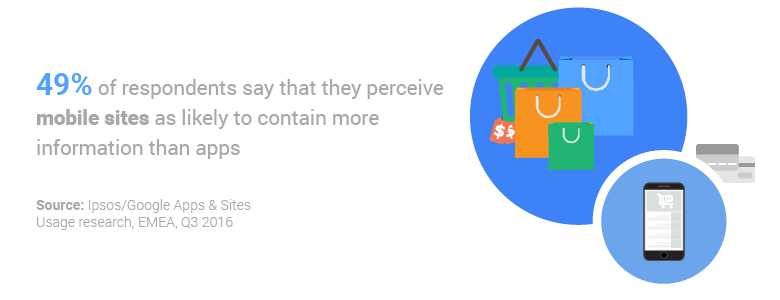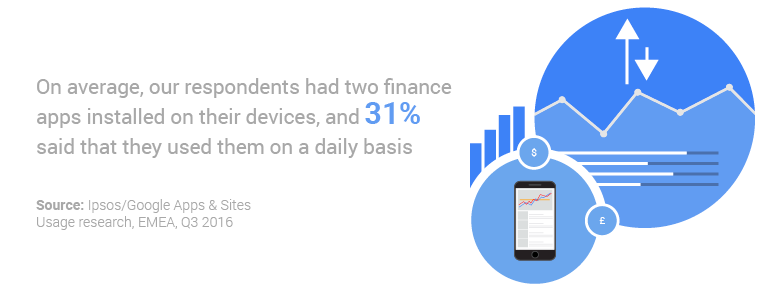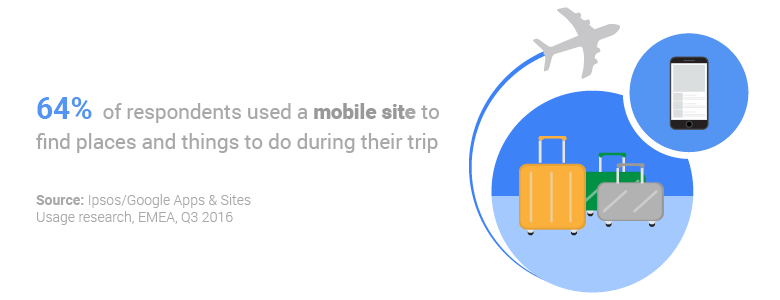Understanding how smartphone usage affects consumer behaviour is one of the key challenges facing marketers in 2017. With mobile still growing at a rapid pace, these devices now play a crucial role for many people as they research, discover and purchase products and services. As part of our mission to help businesses get more out of mobile, we’ve put together some research looking at how mobile sites and apps are influencing user behaviour across Europe, the Middle East and Africa (EMEA).
Mobile Shopping
For shoppers in EMEA, mobile means one of two things: mobile sites or mobile apps. One of the first insights from our research is that usage of these two platforms varies depending on where a customer is in their purchase journey. During the discovery phase, when users are exploring the full range of products and providers available to them, they generally prefer to use mobile sites, while mobile apps are preferred for completing purchases. As these markets mature, we may see similar trends emerge to one we’ve observed in the US, where mobile app purchases now make up more than 50% of all mobile transactions.

To understand why users favour mobile sites in some circumstances and mobile apps in others, we need to look at the tasks they are trying to complete, and how the user experiences of sites and apps are tailored to these activities. In our research, mobile sites are typically preferred when users are browsing without a specific aim, with 49% of respondents saying that they perceive sites as likely to contain more information than apps. In contrast, apps are generally preferred when users are looking to quickly complete a defined task, with 60% of respondents judging them faster to load and 62% believing them simpler to navigate. Additionally, 41% of users who downloaded shopping apps said they did so to unlock discounts and offers. Marketers seeking to drive usage of mobile apps should not just rely on their native advantage in speed and usability, but should also ensure that the available content is as fresh and comprehensive as on their mobile website. Conversely, when driving traffic to a mobile site, marketers should be aware that users will still judge the site’s speed and ease-of-use.
Mobile Finance
In addition to looking at general patterns of mobile shopping behaviour, our research also explores how mobile is affecting the Finance and Travel verticals. Mobile Finance apps have made a lot of headway with users in this sector, with balance checks, transfers and bill payments all vastly easier and more convenient on mobile apps compared to traditional banking systems. On average, our respondents had two finance apps installed on their devices, and 31% said that they used them on a daily basis. For most finance app users, the fact that the app was published by their primary bank or financial institution was given as the main reason for downloading, with 54% citing this explanation. With such a strong incentive for existing customers to download and make use of mobile apps, financial institutions have a great opportunity to leverage customer loyalty to drive growth of their app. By providing frictionless access to common banking functions, along with useful notifications for deposits, transactions and balance alerts, banking apps can make users’ lives easier and quickly become indispensable.

Mobile Travel
In the travel sector, we found that users are more likely to use a mobile site when organising a holiday or booking a business trip, with 57% saying they they had used a mobile site for this purpose in the previous 30 days. However, the research also revealed that there was no explicit preference for sites over apps, meaning that there is no reason why a well-designed native app could not buck this trend and achieve strong engagement from consumers. With travel behaviour split between research-based and action-based activity, the big opportunity for travel app growth is in integrating the kind of content consumers are looking for during the discovery phase. Surfacing flight details, discounts and other discovery content into a seamless app experience could boost engagement and increase conversion, especially as users become even more comfortable with the idea of completing purchases in-app.






